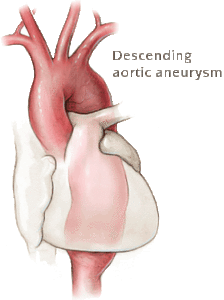
Diagnosed with Cancer? Your two greatest challenges are understanding cancer and understanding possible side effects from chemo and radiation. Knowledge is Power!
Learn about conventional, complementary, and integrative therapies.
Dealing with treatment side effects? Learn about evidence-based therapies to alleviate your symptoms.
Click the orange button to the right to learn more.
- You are here:
- Home »
- Blog »
- side effects ID and prevention »
- Dilated Aorta? Men are Larger On Average-
Dilated Aorta? Men are Larger On Average-

“The mean diameter of the ascending and descending aorta was substantially larger in men than in women… Age, height, weight and traditional cardiovascular risk factors were also associated with larger AA and/or DA diameters
My descending aorta is enlarged. My cardiologist called me a few hours after my last appointment to tell me that 25% of people with my measure of descending aortic enlargement experience a disection- meaning, their aorta splits open. Most people die when their aorta splits open.
I am a long-term cancer survivor living with a host of long-term and late stage side effects. My only point in mentioning this is that surgery to fix may enlarged descending aorta carries many real risks with it.
I told my cardiologist that I didn’t want to undergo surgery to fix my enlarged descending aorta because:
- I face many addition risks when having this sort of extensive surgery
- I am extremely cynical aka distrustful of conventional medicine
For example, when a medical doctor quotes statistics to me such as “25% of patients with your enlarged descending aorta experience dissection!” I can’t help but wonder:
- who makes up this 25%? Older, overweight, out-of-shape, people who eat poorly?
- who makes up this 25%? Men, women, how many of each?
My point is that I exercise daily, eat nutritiously, don’t drink alcohol, have a normal BMI for my height, and I am male.
I don’t know if any of these lifestyle factors makes any difference at all when it comes to the chances of my enlarged descending aorta splitting open. But I think they probably do.
According to the study linked an excerpted below, this fact alone indicates that my aorta may be larger than whatever average was used in the study that my cardiologist was referring to.
I’ll try to let you know if my descending aorta dissects. If I live through the event I will post about it.
Do you have a dilated descending aorta? If so, are you male, female? Do you exercise? What do you think about my reasoning above? Do you think I’m out of my mind?
Scroll down, post a question or a comment and I will reply to you ASAP.
Thanks,
David Emerson
- Cancer Survivor
- Cancer Coach
- Director The Galen Foundation
Recommended Reading:
Sex-specific distributions and determinants of thoracic aortic diameters in the elderly
“Objective To provide population-based distributions of thoracic aortic diameters in men and women aged 55 years or older and to identify determinants of thoracic aortic diameters.
Methods From 2003 to 2006, 2505 participants (1208 men, mean age 69.1±6.8 years) from the prospective population-based Rotterdam Study underwent non-enhanced cardiac CT. The diameter of the ascending (AA) and descending aorta (DA) was measured at the level of the pulmonary bifurcation.
Results The mean diameter of the ascending and descending aorta was substantially larger in men (38±4 mm and 30±2 mm) than in women (35±3 mm and 27±2 mm).
An ascending aortic diameter of larger than 40 mm was found in 228 (18.9%) men and 76 (5.9%) women and a descending aortic diameter larger than 40 mm was found in two men and no women.
Male sex was found to be independently associated with larger DA diameter (standardised β 0.24, 95% CI 0.19 to 0.30), while a statistically non-significant trend was found for the AA diameter (standardised β 0.06, 95% CI 0.00 to 0.12).
Age, height, weight and traditional cardiovascular risk factors were also associated with larger AA and/or DA diameters. Diabetes was associated with smaller AA and DA diameters. We found no evidence for effect modification by sex.
Conclusions In persons aged 55 years or older, an ascending aortic diameter of 40 mm or larger was found in 18.9% of men and 5.9% of women. Given the importance of sex, sex-specific distribution values may prove useful in clinical practice, even when correcting for body surface area or height.
Full Text-http://dx.doi.org/10.1136/heartjnl-2019-315320


